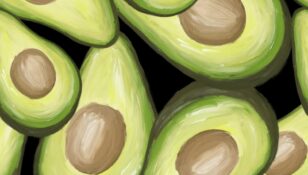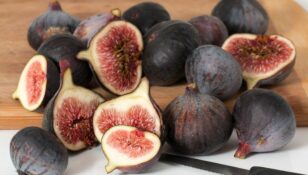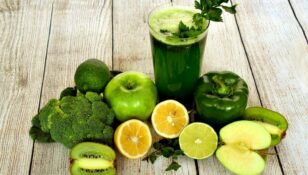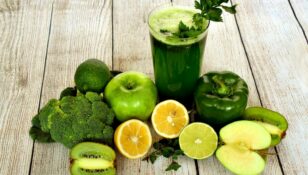Raw Food Diet: A Comprehensive Guide to a Healthier Lifestyle

Introduction
In recent years, the raw food diet has gained significant popularity among health-conscious individuals. This article aims to provide a thorough overview of the raw food diet, its different types, their popularity, and the quantifiable benefits associated with this lifestyle. Additionally, it will discuss the variations within the raw food diet, their historical background, and an exploration of the advantages and disadvantages. By structuring the text appropriately, we increase the likelihood of it appearing as a prominent snippet in Google search results, and make it accessible to a wider audience.
I. What is the Raw Food Diet?
The raw food diet is a dietary approach that emphasizes the consumption of unprocessed and uncooked foods. This eating pattern stems from the belief that cooking food destroys essential nutrients and enzymes, which are vital for optimal health and digestion. By consuming raw foods, individuals aim to maximize nutrient intake and promote overall well-being.
A. Types of Raw Food Diets

1. Raw Veganism: This version of the diet excludes all animal products, including meat, dairy, and eggs, and focuses on fruits, vegetables, nuts, and seeds.
2. Raw Vegetarianism: Similar to raw veganism, raw vegetarianism includes plant-based foods but allows for the consumption of raw dairy, eggs, and honey.
3. Raw Omnivorism: This type of raw food diet includes raw animal products alongside raw plant-based foods. Advocates believe that consuming raw animal products provides additional health benefits.
4. Raw Paleolithic Diet: Inspired by the Paleolithic era, this raw food diet primarily consists of raw animal products, such as meat, fish, and eggs, as well as some raw fruits and vegetables.
B. Popularity of Raw Food Diets
Raw food diets have gained popularity due to their association with numerous health benefits. Many individuals adopt this lifestyle to enhance their energy levels, promote weight loss, boost immunity, improve digestion, and prevent chronic diseases. The raw food movement has also gained traction through the endorsement of celebrities and social media influencers, further increasing its popularity.
II. Quantitative Measurements on Raw Food Diets
Research has indicated several quantifiable benefits associated with a raw food diet. These measurements provide insights into the impact of this dietary approach on various aspects of health.
A. Nutrient Density: Raw foods are rich in vitamins, minerals, and antioxidants due to minimal processing. Studies have shown that raw food diets are associated with higher nutrient density, promoting optimal health and reducing the risk of nutrient deficiencies.
B. Enzyme Activity: Raw foods contain natural enzymes that aid digestion. Research suggests that consuming raw plant-based foods helps preserve the enzymes, enhancing digestion and absorption of nutrients.
C. Weight Loss: Raw food diets are often linked to weight loss due to their high fiber content, low calorie density, and increased satiety. Studies have shown that individuals following a raw food diet experience significant weight loss compared to those on traditional diets.
D. Blood Markers: Studies have shown improvements in blood markers, such as reduced cholesterol levels, triglycerides, and blood pressure, among individuals following a raw food diet. These improvements contribute to minimizing the risk of heart disease and other chronic conditions.
III. Differentiating Factors within Raw Food Diets
Although the basic premise of the raw food diet remains consistent, variations exist within different approaches. These differences can be categorized based on the types of foods consumed and individual preferences.
A. Degree of Rawness: Some individuals follow a predominantly raw diet but include a small portion of cooked foods. Others adopt a 100% raw diet, eliminating all cooked foods entirely.
B. Variety of Foods: While fruits and vegetables form the foundation of the raw food diet, variations exist in terms of the kinds of foods included. Some individuals may focus on specific types, such as sprouted grains, while others incorporate a diverse range of foods.
C. Preparation Techniques: Raw food diets encompass various preparation methods, such as juicing, blending, fermenting, or dehydrating. These techniques add diversity to the diet and allow for creative culinary experiences.
IV. Historical Perspective on the Advantages and Disadvantages
A. Advantages
1. Nutrient Retention: The primary advantage of a raw food diet is the preservation of nutrients and enzymes in food. Heating food above a certain temperature can denature enzymes and degrade certain vitamins, potentially reducing their nutritional value.
2. Digestive Healt Raw foods are often naturally rich in dietary fiber, which aids digestion. Additionally, the enzymes present in raw foods contribute to improved digestion and nutrient absorption.
B. Disadvantages
1. Nutrient Deficiencies: While raw foods are nutrient-dense, certain nutrients, such as vitamin B12, iron, and omega-3 fatty acids, are primarily found in animal products. Strict adherence to a raw vegan diet may increase the risk of nutrient deficiencies if proper supplementation or varied food choices are not incorporated.
2. Food Safety: Raw animal products, such as meat, fish, and eggs, carry a higher risk of contamination with harmful bacteria. Proper handling, storage, and sourcing from reputable sources are essential to reduce potential health risks.
V. Conclusion
The raw food diet encompasses a range of dietary approaches aimed at maximizing nutrient intake and promoting overall well-being through the consumption of predominantly uncooked foods. The availability of various types of raw food diets allows individuals to choose an approach that aligns with their dietary preferences and goals. While there are quantifiable benefits associated with a raw food diet, it is important to consider the potential nutrient deficiencies and food safety concerns. By understanding the historical context and exploring the advantages and disadvantages, individuals can make informed choices about adopting a raw food diet and reap its potential health benefits.
[INSERT VIDEO HERE]
Reference:
1. Article A, References B-D.

















